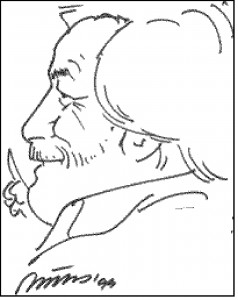Reflections on Guggenbhul-Craig’s Power in the Helping Professions.
Recently, Jeannie and I had the pleasure of being the guests of Don Benson and Helen Spector (Benson) while they were vacationing in Sedona, Arizona. Don is a much-ion-demand consultant on supply change management, as well as an innovator and entrepreneur. In addition, he is probably the most widely read individual that I have ever known. He seems to consume books as frequent intellectual snacks in his otherwise full life.
During our visit, the four of us drove up to the Grand Canyon (south rim). Despite having lived in Tucson for four years in the early 1970s, I had never visited there before. I am happy to report that it is spectacular as the travel posters make it out to be.
Don brought with him a copy of a book that I hadn’t read since the mid-1970s when I was studying humanistic psychology at Sonoma State University. The topic of this book had come up in one of our occasional hour-plus long telephone conversations that always cover a wide range of topics. I had mentioned that I no longer had the book in the possession but was interested in re-reading it.
So re-read it I did.
Essentially, the message in Adolph Guggenbuhl-Craig’s book, Power and the Helping Professions, is directed to social workers, ministers, counselors and therapists. It speaks to the dangers of shadow in the activities of these helping professions. This Jungian concept that reminds us that there is “stuff” operating within out being that we are not aware of and that can profoundly influence our behavior.
In the Foreword of this book, John R., Haule wrote,
“In several seminars at the Jung Institute in Zurich during the 1950s, Jung urged his students to be ‘natural, spontaneous, open, and undefended by the professional persona.’ On one occasion, an Italian candidate asked whether this would not allow the analyst’s shadow to enter the field. Jung responded immediately, ‘Well, of course!’ The shadows of members of the helping professions will be present. Either we can admit them into our work consciously, observe them, and learn from them; or we can ‘hide behind our professional persona; and force the shadow into the role of destroyer.”
As the theme of this book, it is a powerful and important message that has been picked up in the work of Integral Life Practice. It is a message that all in the helping professions—more broadly defined than even Guggenbulh-Craig ventured—need attend to. When I seek to give advice or aid my wife, my children, my colleagues, clients or anyone else, I must attend to the shadow and how it influences my behavior. I cannot escape my power wielding shadow.
One way that shows up is in relationships of all kinds. For example, I am all too often inclined to jump to solving problems for my loved ones and friends, even when all they want is someone to listen while they process what is important to them. The author points out that “the problem of the shadow is not especially acute. It is primarily the assiduous, enthusiastic social workers, truly dedicated, who repeatedly fall victim to the shadow.” When we seek to help others we join the ranks of these social workers. We must all beware of the shadow of the charlatan, the false prophet.
One of the things that attracted me to the fields of organizational development and coaching is that I was told it was not my job to solve people’s problems. My role was more the facilitator, supporting the client in discovering what was important to them and sorting through the dynamics of what was impeding them or that would assure their living into that importance. But I saw in myself and in so many others the ease with which we moved to the solution, guiding the client to do what we believed to be best.
I cannot help to wonder about the role of shadow in leading. After all, stepping into the leader role is taking on the mantle of helper in the sense of supporting the achievement of some goal. But far too often leaders substitute their personal goals for those of the collective. They move from helping the collective to helping themselves. And many do it quite brutally. The shadow leads!
I wonder sometimes what is the relationship between developmentalism (the pursuit of higher levels of development) and power. I suppose the infusion of the spiritual is intended to minimize the damage cause by the shadowy dance of power. But we know from observing those who focus on spirit that this murky spectre shows its presence in their relationships, often sexual in nature.
Guggenbuhl-Craig in his analysis asserts that relationship is fantasy. In therapy there is the phenomenon of transference and counter-transference these dynamic processes of projection onto others. In a helping process these dynamics are usually present. His discussion of worth the whole book and I recommend it to you if these themes are of any interest. For him the mystery of relationship is ambiguous, but involves seeing and accepting other as he/she is. It is a creative dynamic, fulfilling possibilities.
Sexuality is becoming understood as an expression of a relationship. In a helping relationship—professional, psychological or spiritual—it is potentially a theme for discovery of what underlies the sexual energy that is tapped. Living out the sexual experience, however, destroys the foundation of the relationship and its purpose to help, to learn, to heal, to grow, to develop.
Well, there is much more to Guggenbuhl-Craig’s work in this small volume. Suffice it to say that revisiting him offered insights into these and other themes of value. So, thanks Don for the opportunity to remember and reflect.


Pingback: March 2011 Table of Contents